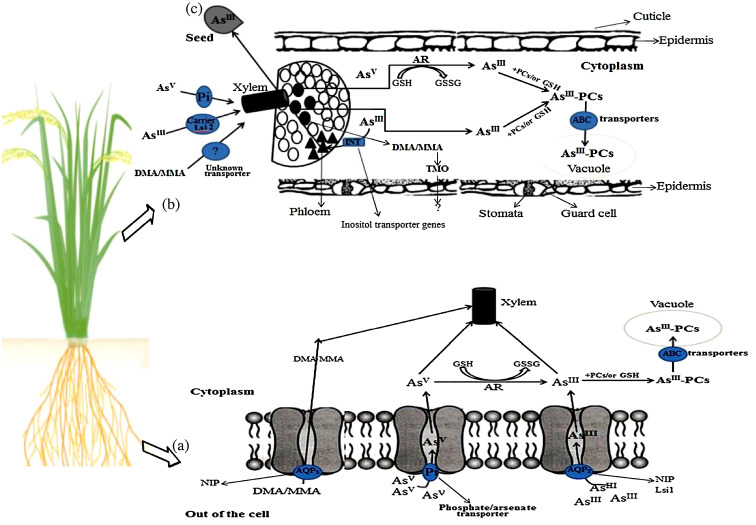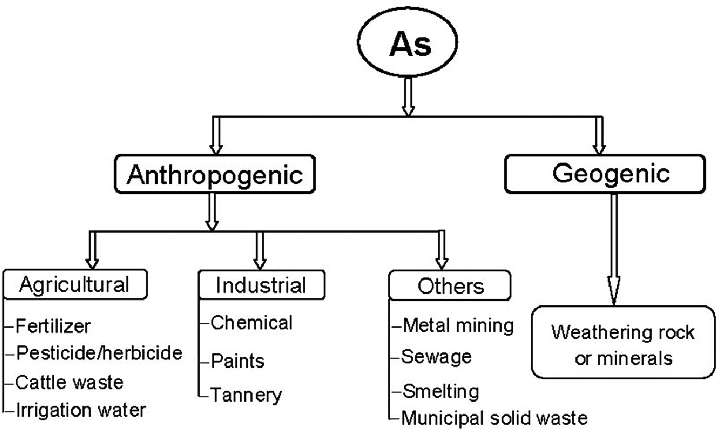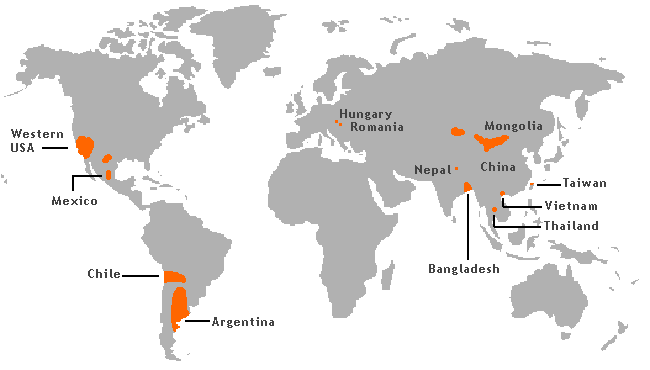Arsenic is a naturally found chemical element whose atomic number is 33 with a symbol as ‘As’. It occurs in many minerals, usually in combination with sulfur and metals, but also as a pure elemental crystal.
- Arsenic is one of the fundamental chemical element.
- It is a metalloid.
- Symbol: As
- Atomic number : 33
- Atomic mass: 74.9216 u
Chemical forms of arsenic
Arsenic exposure is natural but can be aggravated by human activities. Humans are exposed to arsenic in two chemical forms:
1. Inorganic As
Best safe and secure cloud storage with password protection
Get Envato Elements, Prime Video, Hotstar and Netflix For Free
Best Money Earning Website 100$ Day
#1 Top ranking article submission website
- This is poisonous form.
- Varying amounts of this form can be found naturally in geologic materials (soils, rocks, aquifer materials) and in-ground and surface water, which may also be impacted by mining and industrial wastes and arsenical pesticides.
2. Organic As (arsenic compounds that contain carbon)
- This is a non-poisonous form.
- Varying amounts of this form can be found in sources such as animals, plants, fish and seafood.
Routes of exposure to Arsenic
Potentials routes of Arsenic exposure
- Drinking water: Drinking water from underground, can potentially be exposed to excessive amounts of As. Surface water can be contaminated by contact with soils, sediments and mine tailings that contain As, runoff and wastewaters contaminated with As, As -containing pesticides and industrial wastes.
- Air: As attached to very small particles may stay in the air. Expose to dust with elevated As levels may come from agricultural (use of pesticides and fungicides and farming), mining (mine tailings, smelters, particles high in arsenic), inhaling smoke (burning of oil, gasoline, wood, coal), and tobacco smoking (tobacco products have small amounts of As).
- Food: Most foods contain low levels of As. Fish, seafood, algae and rice can contain elevated levels of organic forms of As, however these forms of As have much lower toxicities than inorganic forms.
- Other routes: through incidental soil ingestion and use of home products like wood preservatives, paints, dyes, and medicines.
How can arsenic affect human health?
Factors determine harmful effects of Arsenic
- Dose: How much arsenic are you exposed to?
- Duration: How long you have been exposed to arsenic?
- Genetic susceptibility: Family traits
- Route: Drinking/eating (ingestion), breathing (inhalation), or skin (dermal) contact
- Individual characteristics: Age, general health and lifestyle.
Effects of Arsenic on human health
It affects nearly all organ systems of the body. Arsenic is known to cause cancer in humans and increases the risks of developing lung, skin, bladder, breast, prostate, kidney and liver cancer. Other toxic effects of concern are related to:
- Heart and blood vessels (cardiovascular)
- Stomach and intestines (gastrointestinal)
- Kidney effects
- Liver
- Nerves and nervous system (neurological)
- Lungs (pulmonary)
- Child birth (reproductive)
- Respiratory
- Blood & blood forming organs (hematology)
- Dermal (skin)
Arsenicosis (Arsenic poisoning)
- Arsenicosis is a disease that results from entry of large amounts of arsenic in the body.
- Cumulative buildup of toxins causes serious health problems over the long run.
- Long term exposure to arsenic leads to cancers of the liver, skin, lymphatic system, lungs and urinary tract.
It has two stages: Melanosis and Keratosis:
- Melanosis: It is the discoloration of the skin.
- Keratosis: It is the hardening of the tissues.
Arsenic standards/regulations
- Public drinking water (set by US EPA): 10 ppb, or 10 μg/L for Bangladesh the standard is 50 ppb
- Bottled drinking water (set by US FDA): 10ppb, or 10 μg/L
- Air (set by US Department of Labor, Occupational Safety & Health Administration): 10 μg/m3 of air)
- Food (US EPA): In fruits and citrus: 0.035 ppb
- In eggs and uncooked edible tissues of chickens: 0.05 ppb
- In certain uncooked edible by-products of pigs and others: 0.2 ppb.
How to remove arsenic from drinking water?
Arsenic levels can be reduced to drinking water safe levels using two different technologies:
- Reverse Osmosis process (RO): water passes through a layer (membrane) that filters outs the arsenic.
- Adsorption process: water passes through a filter where the arsenic sticks to a filter (media column) made of another metal like iron, alumina zirconium or titanium.
Mechanism of Arsenic toxicity in plants

Sources of Arsenic (in the paddy field)

Global distribution of As
- Arsenic poisoning is present over 70 countries.
- About 170 million people are suffering in the world.

As contamination in Bangladesh
- In Bangladesh, the groundwater As contamination problem is the worst in the world.
- About 85 million people are at risk from arsenic (As) in drinking water and in food crops.
- Arsenic concentration is higher in Bangladeshi soils, groundwater and plants (data based on 4% area of the country) than the permissible limits or normal range reported.
- Of the 64 districts, 59 has been found to contain As in soil.
 Plantlet The Blogging Platform of Department of Botany, University of Dhaka
Plantlet The Blogging Platform of Department of Botany, University of Dhaka





